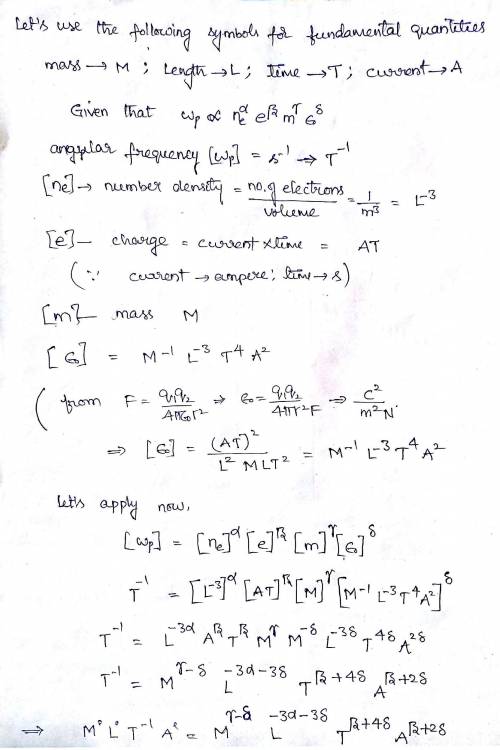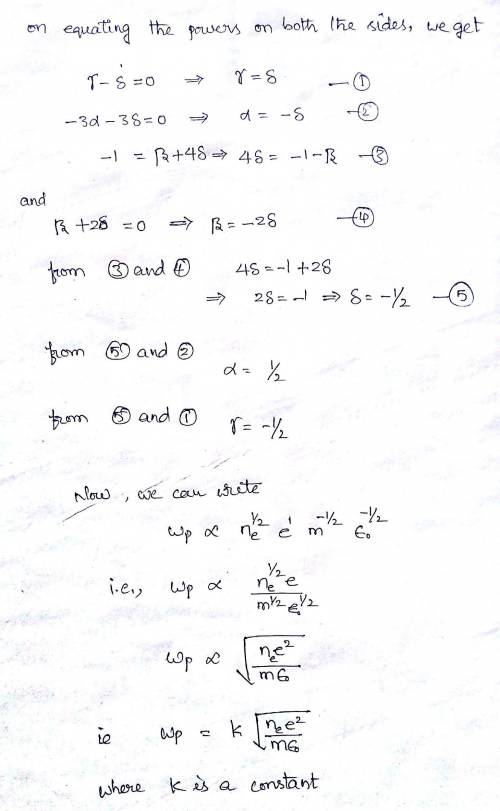
Dimensional analysis for the plasma oscillation frequency: A plasma (hot. ionized gas. with lots of free electrons) of number density ne (number of free electrons per unit volume), can undergo periodic oscillations if disturbed. The relevant dimensional factors are e (the fundamental charge), m (the electron mass), the fundamental constant of electricity Co, and ne. Using dimensional analysis, find the oscillation frequency. *jp, in terms of those four quantities. That is, write omega_P alpha n_epsilon^alpha e^beta m^gamma e_0^delta and solve for alpha, beta, gamma, delta by matching dimensions. Recall that e_0 is defined from Coulombs law for the force between two charges, q_1, q_0 via. F_1,2 = q_1q_2/4 pi e_0 r^2

Answers: 2
Other questions on the subject: Physics

Physics, 22.06.2019 00:30, Waakkaa
Glass is transparent to visibile light under normal conditions; however, at extremely high intensities, glass will absorb most of the light incident upon it. this works through a process known as multiphoton absorption. in this process, several photons are absorbed at the same time. if very intense light whose photons carry 2ev of energy is shined onto a material with a band gap of 4ev, that light can be absorbed through two-photon absorption, because two photons have the right amount of energy to bridge the band gap. what is the minimum number of photons of 800-nm light that are needed to equal or exceed the band gap of fused silica glass
Answers: 1

Physics, 22.06.2019 07:10, ddswaggsoflyy3176
Polly is pushing a box across the floor with a force of 30 n. the force of gravity is –8 n, and the normal force is 8 n. which value could describe the force of friction if polly could not move the box?
Answers: 2

Physics, 22.06.2019 10:50, afonseca73
Asheet of steel 1.5 mm thick has nitrogen atmospheres on both sides at 1200oc and is permitted to achieve a steady-state diffusion condition. the diffusion coefficient for nitrogen in steel at this temperature is 6 x 10- 11 m2 /s, and the diffusion flux is found to be 1.2 x 10-7 kg/m2 -s. also, it is known that the concentration of nitrogen in the steel at the high-pressure surface is 4 kg/m3 . how far into the sheet from this high-pressure side will the concentration be 2.0 kg/m3 ? assume a linear concentration profile.
Answers: 3
Do you know the correct answer?
Dimensional analysis for the plasma oscillation frequency: A plasma (hot. ionized gas. with lots of...
Questions in other subjects:




Chemistry, 26.03.2020 20:52


Mathematics, 26.03.2020 20:52

Mathematics, 26.03.2020 20:52

English, 26.03.2020 20:52

English, 26.03.2020 20:52










